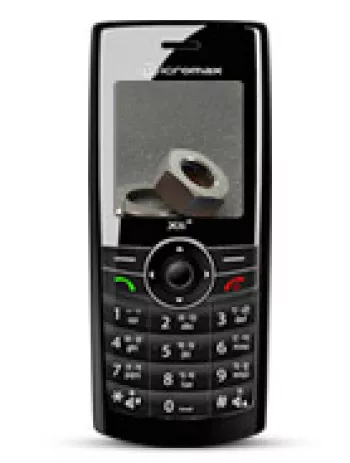
Overview of Micromax X1i
The Micromax X1i is a feature phone that was launched in 2010, known for its basic functionalities and affordability. Despite being discontinued, it played a significant role in the mobile phone market during its time of release. This article explores the detailed specifications and features of the Micromax X1i, highlighting its design, performance, and user experience.
Design and Build
The Micromax X1i boasts a compact design, with dimensions measuring 106 x 44.5 x 16 mm and a weight of only 82 grams. Its lightweight and small form factor make it easy to carry around, fitting comfortably in the pocket or hand. The phone is constructed with durable materials, ensuring it can withstand regular use and minor drops. The design reflects the classic look of early feature phones, featuring a physical keypad underneath the small screen.
Display
Equipped with a 1.46-inch CSTN display, the Micromax X1i can showcase 65,000 colors, making it sufficient for basic functionalities like texting and checking contacts. The resolution stands at 128 x 128 pixels, which may not compare to modern screens but serves its purpose well for a feature phone. The screen-to-body ratio is approximately 14.6%, a typical characteristic of feature phones with physical keypads.
Network and Connectivity
The device supports GSM technology, functioning on 2G bands specifically GSM 900 and 1800. Although lacking advanced connectivity options like Bluetooth and WLAN, it efficiently serves as a communication device for making calls and sending SMS. The absence of GPRS and EDGE may limit internet capabilities, but the core functions of calling and messaging remain unhindered.
Battery Performance
The Micromax X1i is powered by a removable Li-Ion 1800 mAh battery, known for its impressive longevity during its era. Users could experience a standby time of up to 720 hours and a talk time reaching up to 16 hours. Such battery performance is particularly noteworthy for users relying on basic phone operations like calls and texts without frequent recharging.
Memory and Storage
While the phone includes a limited internal memory suitable for 100 phonebook entries, it compensates with a dedicated microSD card slot for additional storage. This option allows users to store essential data externally, a valuable feature for those needing extra space for contacts and messages.
Sound and Audio
The Micromax X1i provides a loudspeaker but lacks a 3.5mm audio jack, which may limit personal listening options. The absence of personalized audio options might be seen as a drawback; however, for basic communication needs, the loudspeaker is adequate.
Additional Features
Despite being a feature phone, the Micromax X1i offers downloadable games, adding an element of entertainment for its users. Nonetheless, it lacks advanced features like Java support and an internet browser, focusing primarily on its core functionalities of calling and messaging through SMS.
Market Status and Pricing
Released in 2010, the Micromax X1i is now discontinued but was available at an affordable price of approximately 20 EUR. This budget-friendly positioning made it an enticing option for users seeking basic mobile communication without the extra cost of smartphones.
User Experience
Users of the Micromax X1i appreciated its durability, simple interface, and reliable battery performance. Its ease of use with straightforward navigation through the keypad attracted users who valued function over form. The device's robustness and long battery life provided a practical solution for those in need of a straightforward communication tool.
Conclusion
The Micromax X1i stands as a testament to the era of feature phones, emphasizing basic communication functionality, durability, and affordability. While it may not compete with modern smartphones in terms of features, its value lies in serving the primary needs of making calls and sending texts efficiently and reliably. The Micromax X1i remains a remarkable example of a well-rounded feature phone that catered to the essential needs of its users.
Main Features of Micromax X1i
- Compact and Lightweight: Weighs only 82 g, with dimensions of 106 x 44.5 x 16 mm.
- Removable Battery: Equipped with a removable Li-Ion 1800 mAh battery.
- Extended Battery Life: Stand-by time of up to 720 hours and talk time of up to 16 hours.
- Expandable Storage: Supports microSD card slot for memory expansion.
- Economical: Priced at around 20 EUR, making it budget-friendly.
Disadvantages of Micromax X1i
- No EDGE support; limited to GPRS Class 10 only.
- The device is discontinued, possibly making it hard to find.
- Small screen size of only 1.46 inches with low resolution (128 x 128 pixels).
- No camera available on the device.
- Lacks modern communication features such as Bluetooth, WLAN, and USB.
- No 3.5mm headphone jack available.
- Limited to basic SMS messaging, with no internet browser support.
- No built-in GPS or radio functionality.
- Does not support Java applications.
- Phonebook capacity is limited to 100 entries only.
View Also
More Phones
All Rights Reserved +14266 Phones © Mobilawy 2025

























